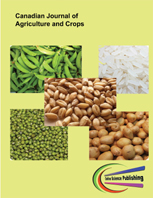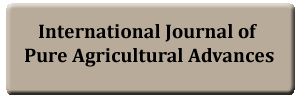Threat Perception of Bacterial Plant Pathogen Xanthomonas campestris pv. campestris (Pammel) Dowson, Causing Black Rot Disease in Cabbage fields
DOI:
https://doi.org/10.20448/803.5.2.174.186Keywords:
Threat perception, Black rot, X.c.pv.campestris, Bacterial survival, Disease management, Threat component.Abstract
Black rot disease bacterium Xanthomonas campestris pv.campestris(Pammel)Dowson (Xcc) produced typical blackening of leaf veins of cabbage seedling and cabbage head on 6th day of inoculation and the entire cabbage head got rotten within 10-15 days. Different cole crop leaves infiltrated with Xcc produced either Hypersensitive/ incompatible /susceptible reaction. The infiltration of Xcc in to leaves of various weeds in /around cabbage field produced browning or yellowing reaction areas like the browning reaction produced by Xcc on other cole crops, These reaction areas had the presence of Xcc up to 15 days indicating that these serve as a source of inoculum. The Xcc re-isolated from browning areas of these weeds after 2 weeks and inoculated on cabbage head produced typical black rot disease. The black rot bacteria present on cabbage seeds reduced its germination and seedling vigour. The bacterium survived up to 15 days in dry soil , 30 days in moist soil and up to 3 months in the infected cabbage stumps in soil and thus act as a source of inoculum for infection to the succeeding cabbage crop. Thus, the presence of Xcc on the seeds purchased, in soil/ diseased plant stumps, on the weeds around the cabbage crop fields and other black rot diseased cole crops available in the cultivation area are the important components in determining the threat perception for this disease. Once the threat perception is known, it becomes easier to plan the black rot disease management according to the threat component.


